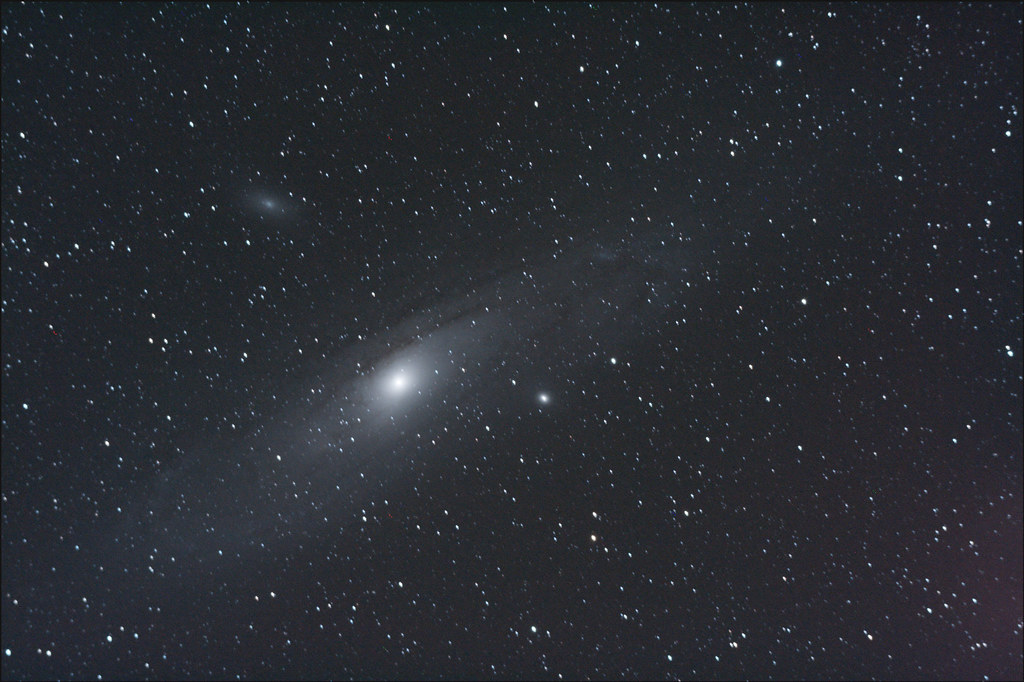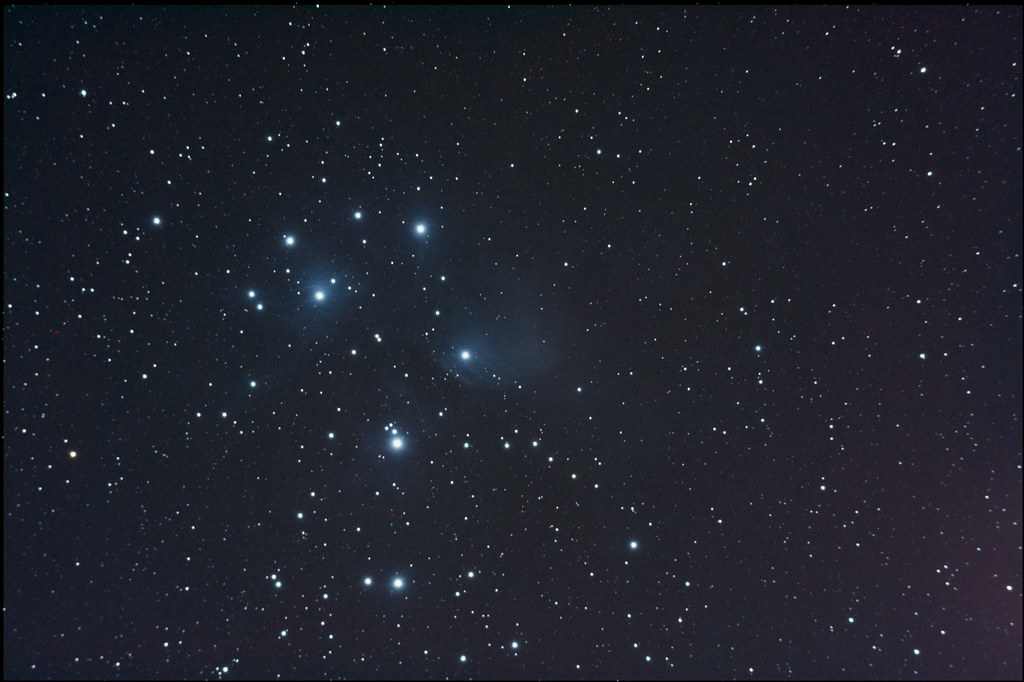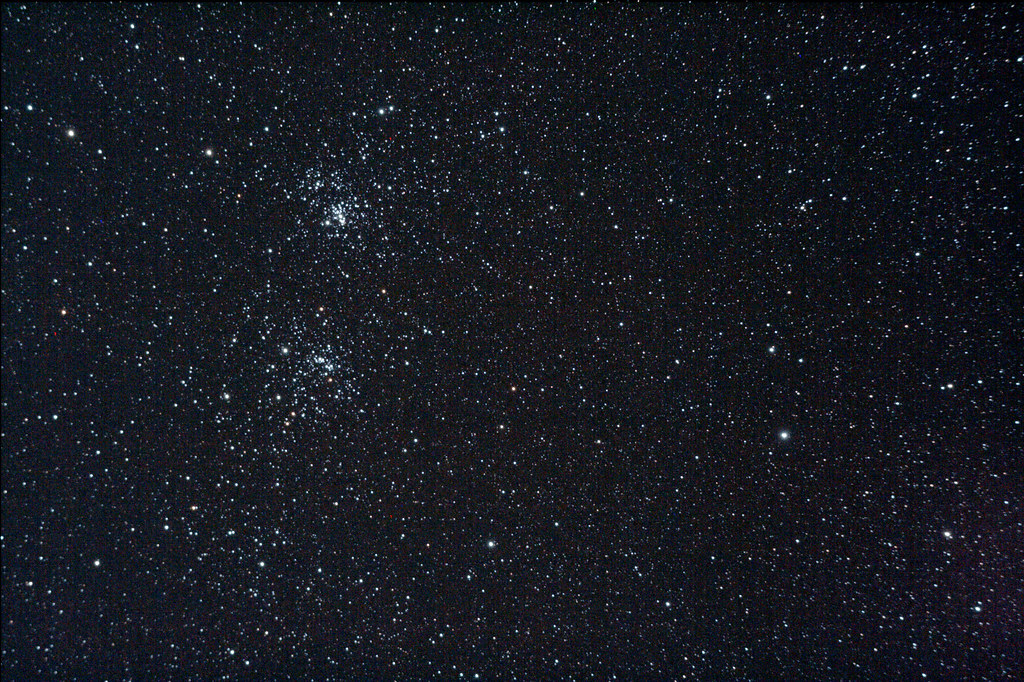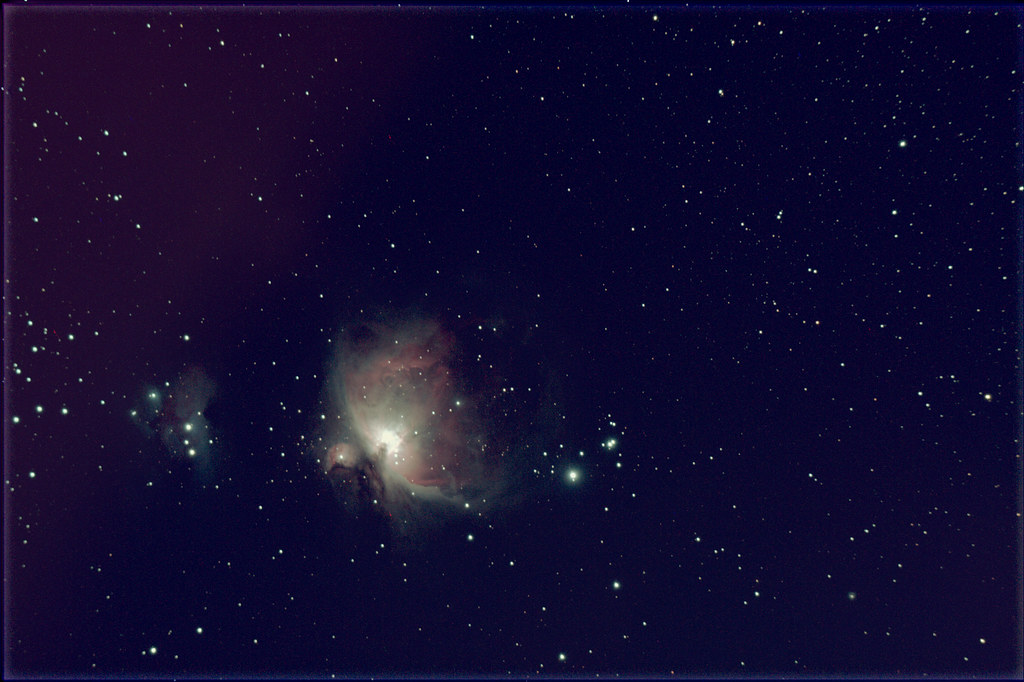After my first weekend out with the new rig it was two weeks later before the weather cooperated and allowed some imaging. It was mid-October now and the weather had briefly turned cold, but at the same time brought much clearer skies. I actually didn't intend to start any DSO imaging yet, I wanted to keep getting familiar with all the equipment and polar alignment techniques. However, the first time I looked at M31 through the William Optics Zenithstar 80 FD, I couldn't help but run back inside and grab the camera. It was too beautiful NOT to photograph. I only snapped about 10 exposures at 90 seconds each, with the camera set at ISO 1600.


I could tell from the exposures being downloaded to my laptop that this would turn out pretty good. I also took some 120 second exposures, but my lack of good polar alignment created too much star trailing to use these images. Next, I moved over to M45 and again took only 10 exposures at 90 seconds each. I then moved over to the Double Cluster (NGC 884 & NGC 869) to try my hand at the monthly imaging contest on the
Cloudy Nights website, where I spend much of my time on the forums. I finished the night by taking a few exposures of M42 in Orion, although it was still low in the sky and a streetlight was shining almost directly in my scope. Later I took some dark & bias frames before tearing down for the night. The next day I took some flat frames using a simple technique of holding two layers of a t-shirt over my telescope with a rubber band and taking some exposures in Av mode. I then used ImagesPlus software to calibrate, align, and stack all my images. I love this software and consider it one of the best investments I made for the entire setup. Without it I truly would be lost, or at least not enjoying things as much! These images posted here represent almost no processing, but I was excited about my initial results. At this point, I knew I was completely hooked!



 I could tell from the exposures being downloaded to my laptop that this would turn out pretty good. I also took some 120 second exposures, but my lack of good polar alignment created too much star trailing to use these images. Next, I moved over to M45 and again took only 10 exposures at 90 seconds each. I then moved over to the Double Cluster (NGC 884 & NGC 869) to try my hand at the monthly imaging contest on the Cloudy Nights website, where I spend much of my time on the forums. I finished the night by taking a few exposures of M42 in Orion, although it was still low in the sky and a streetlight was shining almost directly in my scope. Later I took some dark & bias frames before tearing down for the night. The next day I took some flat frames using a simple technique of holding two layers of a t-shirt over my telescope with a rubber band and taking some exposures in Av mode. I then used ImagesPlus software to calibrate, align, and stack all my images. I love this software and consider it one of the best investments I made for the entire setup. Without it I truly would be lost, or at least not enjoying things as much! These images posted here represent almost no processing, but I was excited about my initial results. At this point, I knew I was completely hooked!
I could tell from the exposures being downloaded to my laptop that this would turn out pretty good. I also took some 120 second exposures, but my lack of good polar alignment created too much star trailing to use these images. Next, I moved over to M45 and again took only 10 exposures at 90 seconds each. I then moved over to the Double Cluster (NGC 884 & NGC 869) to try my hand at the monthly imaging contest on the Cloudy Nights website, where I spend much of my time on the forums. I finished the night by taking a few exposures of M42 in Orion, although it was still low in the sky and a streetlight was shining almost directly in my scope. Later I took some dark & bias frames before tearing down for the night. The next day I took some flat frames using a simple technique of holding two layers of a t-shirt over my telescope with a rubber band and taking some exposures in Av mode. I then used ImagesPlus software to calibrate, align, and stack all my images. I love this software and consider it one of the best investments I made for the entire setup. Without it I truly would be lost, or at least not enjoying things as much! These images posted here represent almost no processing, but I was excited about my initial results. At this point, I knew I was completely hooked!

No comments:
Post a Comment